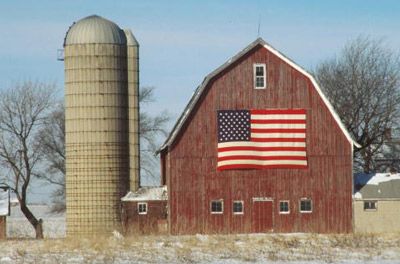
The stars and stripes of the U.S. flag represent a unified nation. All across the land, from sandy shores to rocky mountains and rolling plains, proud Americans fly their flag. Here, it hangs on a snow-covered barn in Illinois. Let's explore the history of the flag and some places it's been raised.
Advertisement
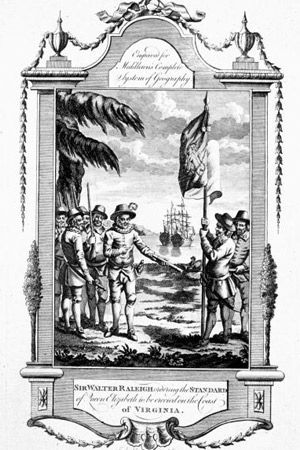
Before the American flag -- or the United States of America, for that matter -- ever existed, England controlled the colonies. Here, the famous explorer Sir Walter Raleigh hoists a flag in Virginia.
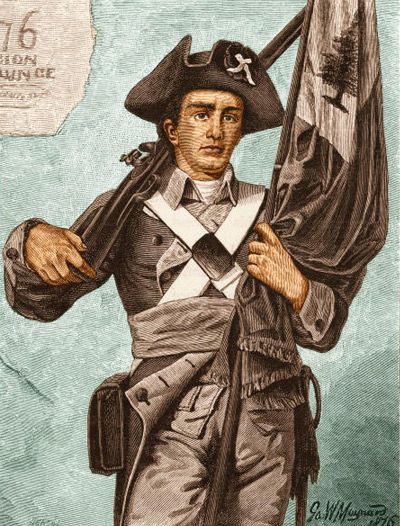
Minutemen, like the one pictured in this engraving from the late 1700s, pledged their service to the militia during the American Revolution. When their service was required, minutemen grabbed arms and joined the fray immediately. This minuteman carries a version of the liberty tree flag, on which the phrase "An Appeal to Heaven" appears. This flag was frequently flown on Gen. George Washington's naval vessels. Other popular Revolution-era flags included the rattlesnake flag with the inscription "Don't Tread on Me" and variations of the Union Jack.
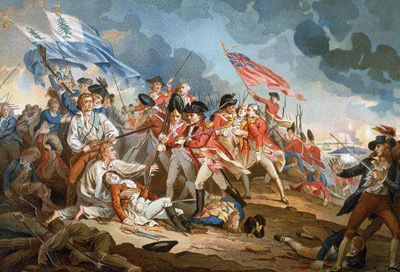
John Trumbull's artistic depiction of the Battle of Bunker Hill includes another flag similar to the liberty tree. This clash between British and colonial forces took place in Charlestown, Mass., on June 17, 1775.
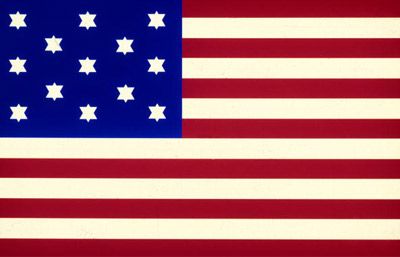
Since the colonies were fighting unitedly for independence, it made sense that they share a unified flag. This image and the next one show early versions of flags that represented the 13 colonies. This flag was created in 1775.
Advertisement
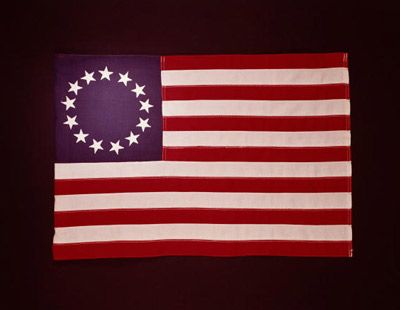
This colonial flag has its stars arranged in a circular formation instead of rows. It dates from 1776.
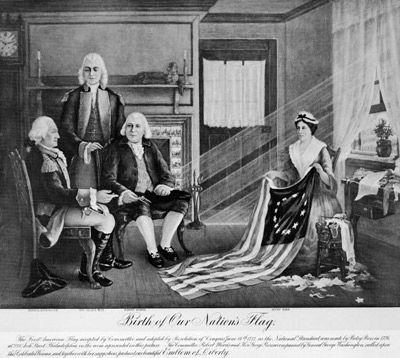
The name most closely associated with the American flag is Betsy Ross, but the story about how she designed the flag might just be a piece of American folklore. Regardless, serveral artists have depicted Ross sewing the stars and stripes. Here, she shows off her workmanship to George Washington and two congressmen.

In this Henry Mosler painting, Betsy Ross and her sewing circle piece together the first American flag in Philadelphia. However, some scholars suggest that Francis Hopkinson, a signer of the Declaration of Independence and the artist who created the Great Seal of the United States, is responsible for the creation of the American flag.
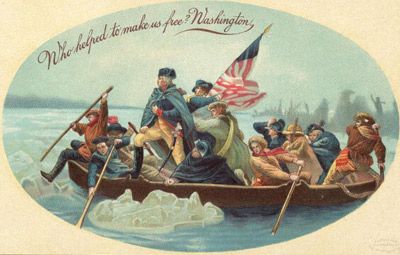
This postcard bears an illustration based on Emanuel Leutze's painting "Washington Crossing the Delaware." The American flag is prominently displayed in the tableau, which has become one of the most popular images of the American Revolution.
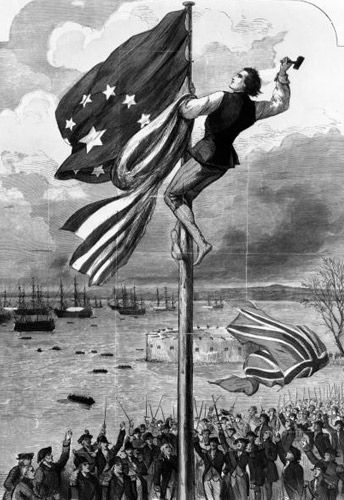
In this illustration, British troops withdraw after formally acknowledging America's independence. A lithe American man scurries up the flagpole to take down the Union Jack and raise the American flag.
Advertisement
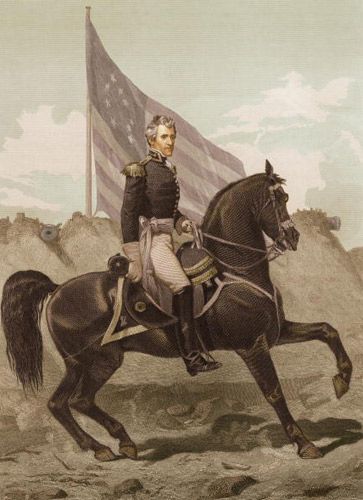
Before he served two terms as president, Andrew Jackson led troops as a major general during the War of 1812. In this portrait, Jackson poses on horseback in front of dusty artillery and the American flag.
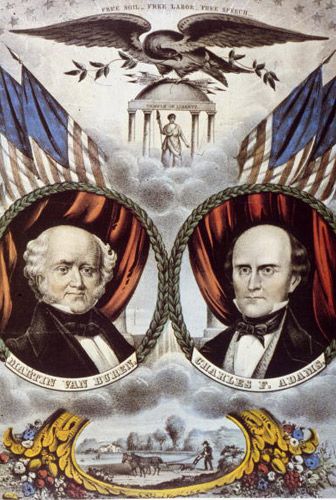
The Free Soil Party, whose motto was "Free soil, free labor, free speech," opposed the expansion of slavery into the Western part of the United States. In this campaign flyer, presidential candidate Martin Van Buren and vice presidential candidate Charles Francis Adams align their images with strong American symbols, including the eagle, the American laborer and the flag.
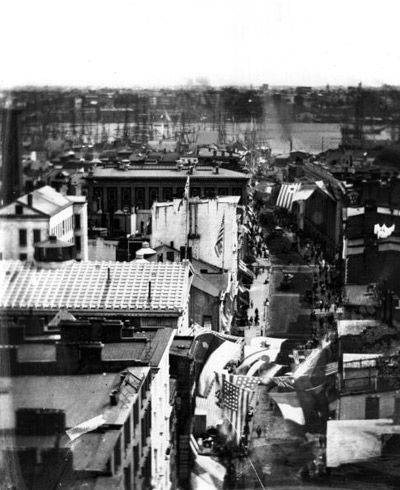
This instantaneous stereo photograph of New York, taken in 1859, shows the motley skyline of Wall Street. While many of the details here are blurry, the American flags flying along the rooftops are easily detectable.
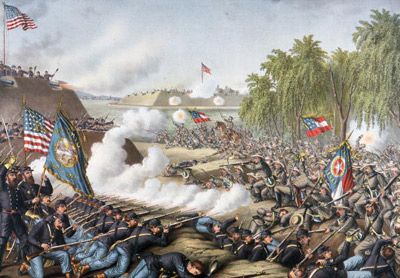
During the Civil War, the American flag was supplanted by the Confederate flag in the South. While today the Confederate flag is viewed as disrespectful by many Americans, its colors were prominently flown at battles such as this one at Corinth, Miss., in the spring of 1862.
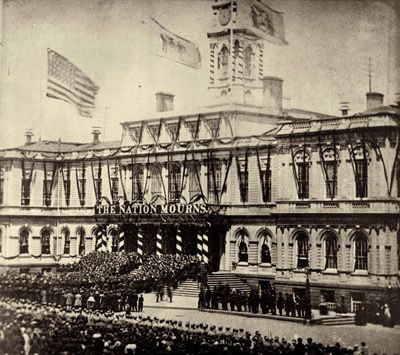
On April 25, 1865, Abraham Lincoln's body was taken to New York's City Hall for a memorial service. A large American flag flies over the building, which is draped in ribbon and bears a sign that reads "The Nation Mourns."
Advertisement
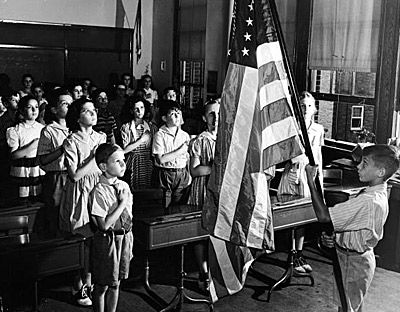
Schoolchildren pledge allegiance to the flag in the 1950s. In 2005, a high school junior challenged a 1942 Florida law that students must rise and recite the pledge at school; children could be excused from this exercise by presenting a note from their parents. In the 2005 case, presented to the U.S. Supreme Court as Frazier v. Smith, students' First Amendment rights to refuse to say the pledge were called into question. By October 2009, however, the Supreme Court had declined to take on the case.
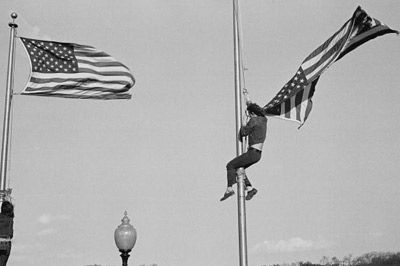
The flag's symbolism of independence and democracy isn't taken lightly by Americans, who value the rights afforded to them by the U.S. Constitution. The constitution guarantees free speech, and some Americans used this right to protest the Vietnam War. In this image, captured April 24, 1971, a man takes down the American flag at an antiwar rally in Washington, D.C.
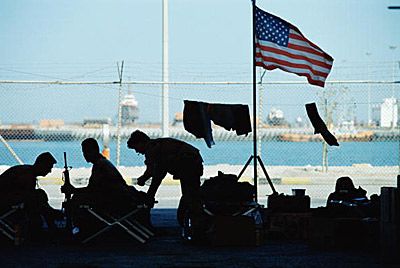
Far from home, the American flag provides military personnel with a sense of purpose, comfort and duty. These soldiers fly the flag at their camp in Dhahran, Saudi Arabia, during the Persian Gulf War in December 1990.
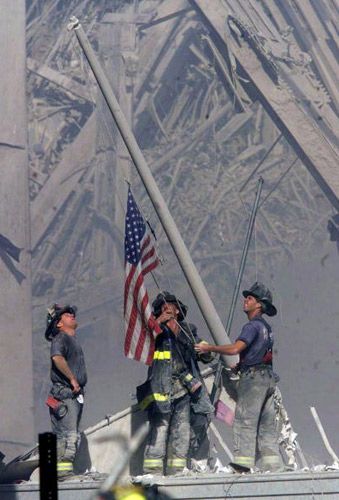
In this iconic image from Sept. 11, 2001, firefighters raise the American flag above the rubble of the World Trade Center. The United States experienced a great surge of patriotism following the shocking acts of terrorism perpetrated by al-Qaida.
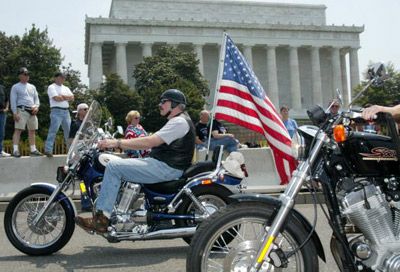
The annual Rolling Thunder motorcycle rally in Washington, D.C., follows a course that passes by the Lincoln Memorial. The rally is held in honor of Vietnam War veterans, prisoners of war, soldiers missing in action, current members of the military and those killed in service. This patriotic motorcyclist showcases the stars and stripes on the back of his bike.
Advertisement
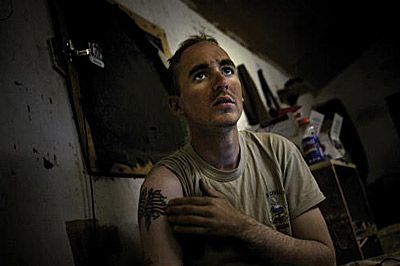
Specialist William Fox, a gunner of the 4-73rd Cavalry (82nd Airborne Division), shows his American flag tattoo to a journalist in Paktia Province, Afghanistan. A Kentucky native, Fox confesses that many of his tattoos, acquired after a night of drinking, are regrettable, but he is proud of this particular design.
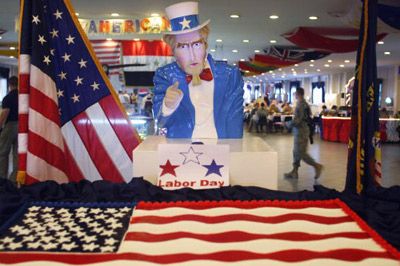
The incredible, edible American flag is on tantalizing display at the American embassy's dining hall in Baghdad. This festive flag cake is guarded by an Uncle Sam figurine, who ensures no one swipes any frosting before dessert.